Correlating Synthesis Parameters to Morphological Entities: Predictive Modeling of Biopolymer Aerogels
Abstract
:1. Introduction
2. Materials and Methods
2.1. Materials and Aerogel Preparation
2.1.1. Pectin Aerogels
2.1.2. Cellulose Aerogels
2.1.3. K-Carrageenan Aerogels
2.2. Characterization Methods
2.3. Mechanical Testing
3. Concentration of Constituents and Its Effect on Aerogel Properties
3.1. Pectin Aerogels
3.2. Cellulose Aerogels
3.3. K-Carrageenan Aerogels
4. Micromechanical Constitutive Model
4.1. Nonlinear Behavior of a Microcell under Compression
4.2. Network Portrayal and Description of Pore Collapse
5. Parameter Study
6. Model Predictions vs. Experimental Data
7. Conclusions
Supplementary Materials
Author Contributions
Funding
Acknowledgments
Conflicts of Interest
Abbreviations
| NMR | Nuclear Magnetic Resonance |
| DP | Degree of polymerization |
| BET | Brunnauer-Emmet-Teller measurements |
| BJH | Barrett-Joyner-Halenda |
| 1D | One-dimension |
| 3D | Three-dimensions |
| MD | Molecular dynamics |
| PK | Piola-Kirchhoff |
Appendix A. Solution to Large Deflection of the Square Shaped Microcell
Appendix B. Pore size Volume Distribution

References
- Kistler, S.S. Coherent Expanded Aerogels. Nature 1931, 127, 741. [Google Scholar] [CrossRef]
- Kistler, S. Coherent Expanded Aerogels. J. Phys. Chem. 1932, 34, 52. [Google Scholar]
- García-González, C.A.; Alnaief, M.; Smirnova, I. Polysaccharide-based aerogels—Promising biodegradable carriers for drug delivery systems. Carbohydr. Polym. 2011, 86, 1425–1438. [Google Scholar] [CrossRef]
- Robitzer, M.; Renzo, F.D.; Quignard, F. Natural materials with high surface area. Physisorption methods for the characterization of the texture and surface of polysaccharide aerogels. Microporous Mesoporous Mater. 2011, 140, 9–16. [Google Scholar] [CrossRef]
- Capel, F.; Nicolai, T.; Durand, D.; Boulenguer, P.; Langendorff, V. Calcium and acid induced gelation of (amidated) low methoxyl pectin. Food Hydrocolloids 2006, 20, 901–907. [Google Scholar] [CrossRef]
- Belton, P.; Morris, V.; Tanner, S. Interaction of group I cations with iota, kappa and lambda carrageenans studied by multinuclear nmr. Int. J. Biol. Macromol. 1985, 7, 53–56. [Google Scholar] [CrossRef]
- Nilsson, S.; Piculell, L. Helix-coil transitions of ionic polysaccharides analyzed within the Poisson-Boltzmann cell model. 4. Effects of site-specific counterion binding. Macromolecules 1991, 24, 3804–3811. [Google Scholar] [CrossRef]
- Zhang, W.; Piculell, L.; Nilsson, S. Effects of specific anion binding on the helix-coil transition of lower charged carrageenans. NMR data and conformational equilibria analyzed within the Poisson-Boltzmann cell model. Macromolecules 1992, 25, 6165–6172. [Google Scholar] [CrossRef]
- Piculell, L. Gelling carrageenans. In Food Polysaccharides and their Applications; Alistair, M.S., Glyn, O.P., Eds.; Taylor & Francis Group: Boca Raton, FL, USA, 2006; p. 239. [Google Scholar]
- Robitzer, M.; Tourrette, A.; Horga, R.; Valentin, R.; Boissière, M.; Devoisselle, J.M.; Di Renzo, F.; Quignard, F. Nitrogen sorption as a tool for the characterisation of polysaccharide aerogels. Carbohyd. Polym. 2011, 85, 44–53. [Google Scholar] [CrossRef] [Green Version]
- Quignard, F.; Valentin, R.; Di Renzo, F. Aerogel materials from marine polysaccharides. New J. Chem. 2008, 32, 1300–1310. [Google Scholar] [CrossRef]
- Boissière, M.; Tourrette, A.; Devoisselle, J.M.; Di Renzo, F.; Quignard, F. Pillaring effects in macroporous carrageenan–silica composite microspheres. J. Colloid Interface Sci. 2006, 294, 109–116. [Google Scholar] [CrossRef] [PubMed]
- Ganesan, K.; Ratke, L. Facile preparation of monolithic kappa-carrageenan aerogels. Soft Matter 2014, 10, 3218–3224. [Google Scholar] [CrossRef] [PubMed]
- Alnaief, M.; Obaidat, R.; Mashaqbeh, H. Effect of processing parameters on preparation of carrageenan aerogel microparticles. Carbohyd. Polym. 2018, 180, 264–275. [Google Scholar] [CrossRef] [PubMed]
- Obaidat, R.M.; Alnaief, M.; Mashaqbeh, H. Investigation of Carrageenan Aerogel Microparticles as a Potential Drug Carrier. AAPS PharmSciTech 2018, 19, 2226–2236. [Google Scholar] [CrossRef] [PubMed]
- Smirnova, I.; Gurikov, P. Aerogels in chemical engineering: strategies toward tailor-made aerogels. Annu. Rev. Chem. Biomol. 2017, 8, 307–334. [Google Scholar] [CrossRef] [PubMed]
- García-González, C.A.; Jin, M.; Gerth, J.; Alvarez-Lorenzo, C.; Smirnova, I. Polysaccharide-based aerogel microspheres for oral drug delivery. Carbohydr. Polym. 2015, 117, 797–806. [Google Scholar] [CrossRef] [PubMed] [Green Version]
- Mehling, T.; Smirnova, I.; Guenther, U.; Neubert, R.H.H. Polysaccharide-based aerogels as drug carriers. J. Non. Cryst. Solids 2009, 355, 2472–2479. [Google Scholar] [CrossRef]
- Mikkonen, K.S.; Parikka, K.; Ghafar, A.; Tenkanen, M. Prospects of polysaccharide aerogels as modern advanced food materials. Trends Food Sci. Technol. 2013, 34, 124–136. [Google Scholar] [CrossRef]
- Renard, D.; van de Velde, F.; Visschers, R.W. The gap between food gel structure, texture and perception. Food Hydrocolloids 2006, 20, 423–431. [Google Scholar] [CrossRef]
- Chung, C.; Degner, B.; McClements, D.J. Controlled biopolymer phase separation in complex food matrices containing fat droplets, starch granules, and hydrocolloids. Food Res. Int. 2013, 54, 829–836. [Google Scholar] [CrossRef]
- Chung, C.; Degner, B.; Decker, E.A.; McClements, D.J. Oil-filled hydrogel particles for reduced-fat food applications: fabrication, characterization, and properties. Innov. Food Sci. Emerg. Technol. 2013, 20, 324–334. [Google Scholar] [CrossRef]
- Korhonen, J.T.; Hiekkataipale, P.; Malm, J.; Karppinen, M.; Ikkala, O.; Ras, R.H. Inorganic hollow nanotube aerogels by atomic layer deposition onto native nanocellulose templates. ACS Nano 2011, 5, 1967–1974. [Google Scholar] [CrossRef] [PubMed]
- Buesch, C.; Smith, S.W.; Eschbach, P.; Conley Jr, J.F.; Simonsen, J. The Microstructure of Cellulose Nanocrystal Aerogels as Revealed by Transmission Electron Microscope Tomography. Biomacromolecules 2016, 17, 2956–2962. [Google Scholar] [CrossRef] [PubMed]
- Schestakow, M.; Muench, F.; Reimuth, C.; Ratke, L.; Ensinger, W. Electroless synthesis of cellulose-metal aerogel composites. Appl. Phys. Lett. 2016, 108, 213108. [Google Scholar] [CrossRef]
- Pircher, N.; Veigel, S.; Aigner, N.; Nedelec, J.M.; Rosenau, T.; Liebner, F. Reinforcement of bacterial cellulose aerogels with biocompatible polymers. Carbohydr. Polym. 2014, 111, 505–513. [Google Scholar] [CrossRef] [PubMed]
- Rege, A.; Itskov, M. A microcell-based constitutive modeling of cellulose aerogels under tension. Acta Mech. 2018, 229, 585–593. [Google Scholar] [CrossRef]
- Rege, A.; Schestakow, M.; Karadagli, I.; Ratke, L.; Itskov, M. Micro-mechanical modeling of cellulose aerogels from molten salt hydrates. Soft Matter 2016, 12, 7079–7088. [Google Scholar] [CrossRef] [PubMed]
- Schestakow, M.; Karadagli, I.; Ratke, L. Cellulose aerogels prepared from an aqueous zinc chloride salt hydrate melt. Carbohydr. Polym. 2016, 137, 642–649. [Google Scholar] [CrossRef] [PubMed]
- Hoepfner, S.; Ratke, L.; Milow, B. Synthesis and characterisation of nanofibrillar cellulose aerogels. Cellulose 2007, 15, 121–129. [Google Scholar] [CrossRef]
- Zhao, S.; Malfait, W.J.; Guerrero-Alburquerque, N.; Koebel, M.M.; Nyström, G. Biopolymer Aerogels and Foams: Chemistry, Properties, and Applications. Angew. Chem. Int. Ed. 2018, 57, 7580–7608. [Google Scholar] [CrossRef] [PubMed]
- Bisshopp, K.E.; Drucker, D.C. Large Deflection of Cantilever Beams. Q. Appl. Math. 1945, 3, 272–275. [Google Scholar] [CrossRef]
- Chen, L. An integral approach for large deflection cantilever beams. Int. J. Non. Linear. Mech. 2010, 45, 301–305. [Google Scholar] [CrossRef]
- Jenkins, J.A.; Seitz, T.B.; Przemieniecki, J.S. Large deflections od diamond-shaped frames. Int. J. Solids Struct. 1966, 2, 591–603. [Google Scholar] [CrossRef]
- Bazant, Z.P.; Oh, B.H. Efficient Numerical Integration on the Surface of a Sphere. Zeitschrift für Angew. Math. und Mech. 1986, 66, 37–49. [Google Scholar] [CrossRef]
- Itskov, M. On the accuracy of numerical integration over the unit sphere applied to full network models. Comput. Mech. 2016, 57, 859–865. [Google Scholar] [CrossRef]
- Heo, S.; Xu, Y. Constructing fully symmetric cubature formulae for the sphere. Math. Comput. 2000, 70, 269. [Google Scholar] [CrossRef]
- Zhao, H.B.; Chen, M.; Chen, H.B. Thermally insulating and flame-retardant polyaniline/pectin aerogels. ACS Sustain. Chem. Eng. 2017, 5, 7012–7019. [Google Scholar] [CrossRef]
- Zhao, S.; Malfait, W.J.; Demilecamps, A.; Zhang, Y.; Brunner, S.; Huber, L.; Tingaut, P.; Rigacci, A.; Budtova, T.; Koebel, M.M. Strong, thermally superinsulating biopolymer–silica aerogel hybrids by cogelation of silicic acid with pectin. Angew. Chem. Int. Ed. 2015, 54, 14282–14286. [Google Scholar] [CrossRef] [PubMed]
- Chen, H.B.; Chiou, B.S.; Wang, Y.Z.; Schiraldi, D.A. Biodegradable pectin/clay aerogels. ACS Appl. Mater. Interfaces 2013, 5, 1715–1721. [Google Scholar] [CrossRef] [PubMed]
- Rudaz, C.; Courson, R.; Bonnet, L.; Calas-Etienne, S.; Sallee, H.; Budtova, T. Aeropectin: Fully biomass-based mechanically strong and thermal superinsulating aerogel. Biomacromolecules 2014, 15, 2188–2195. [Google Scholar] [CrossRef] [PubMed]
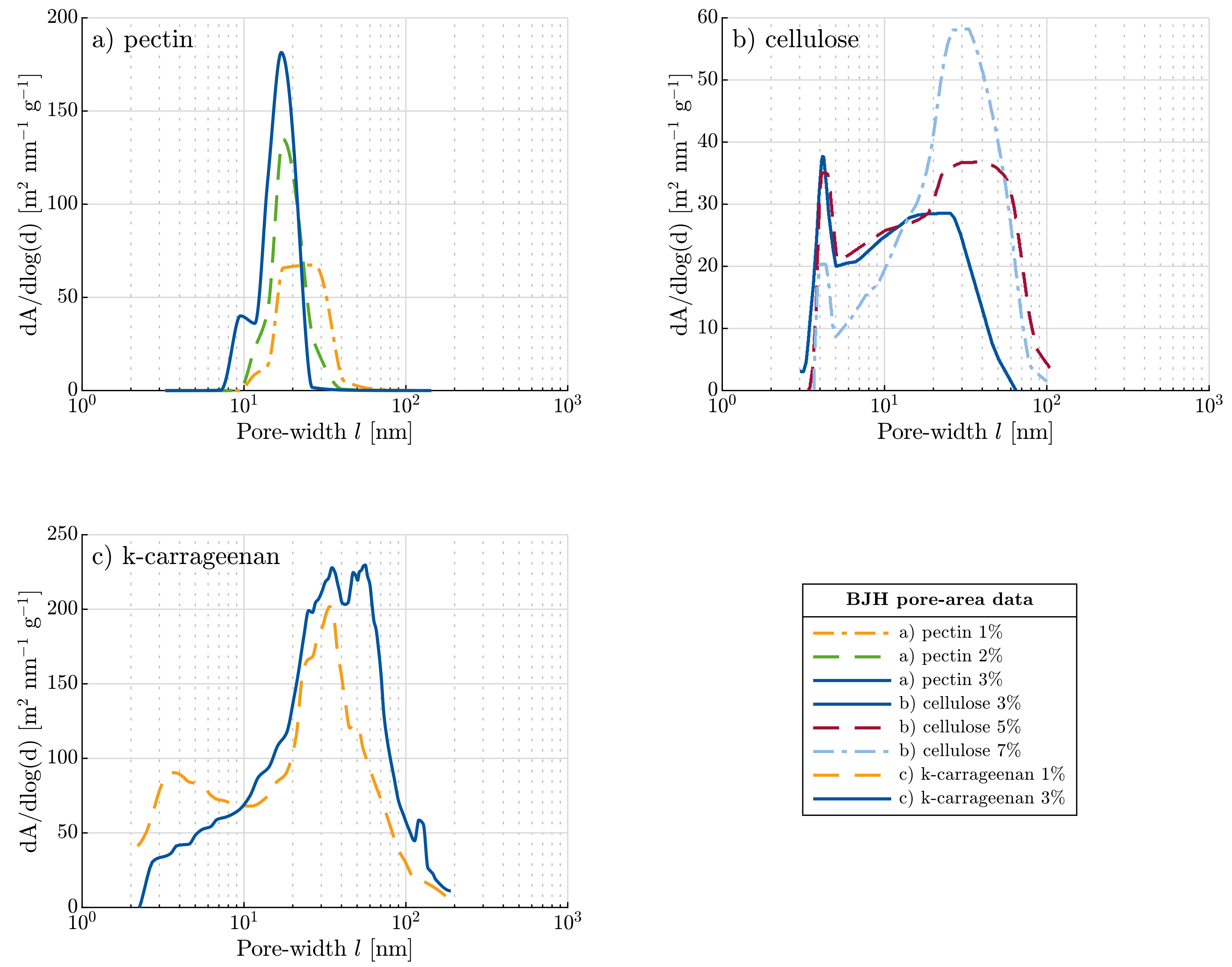

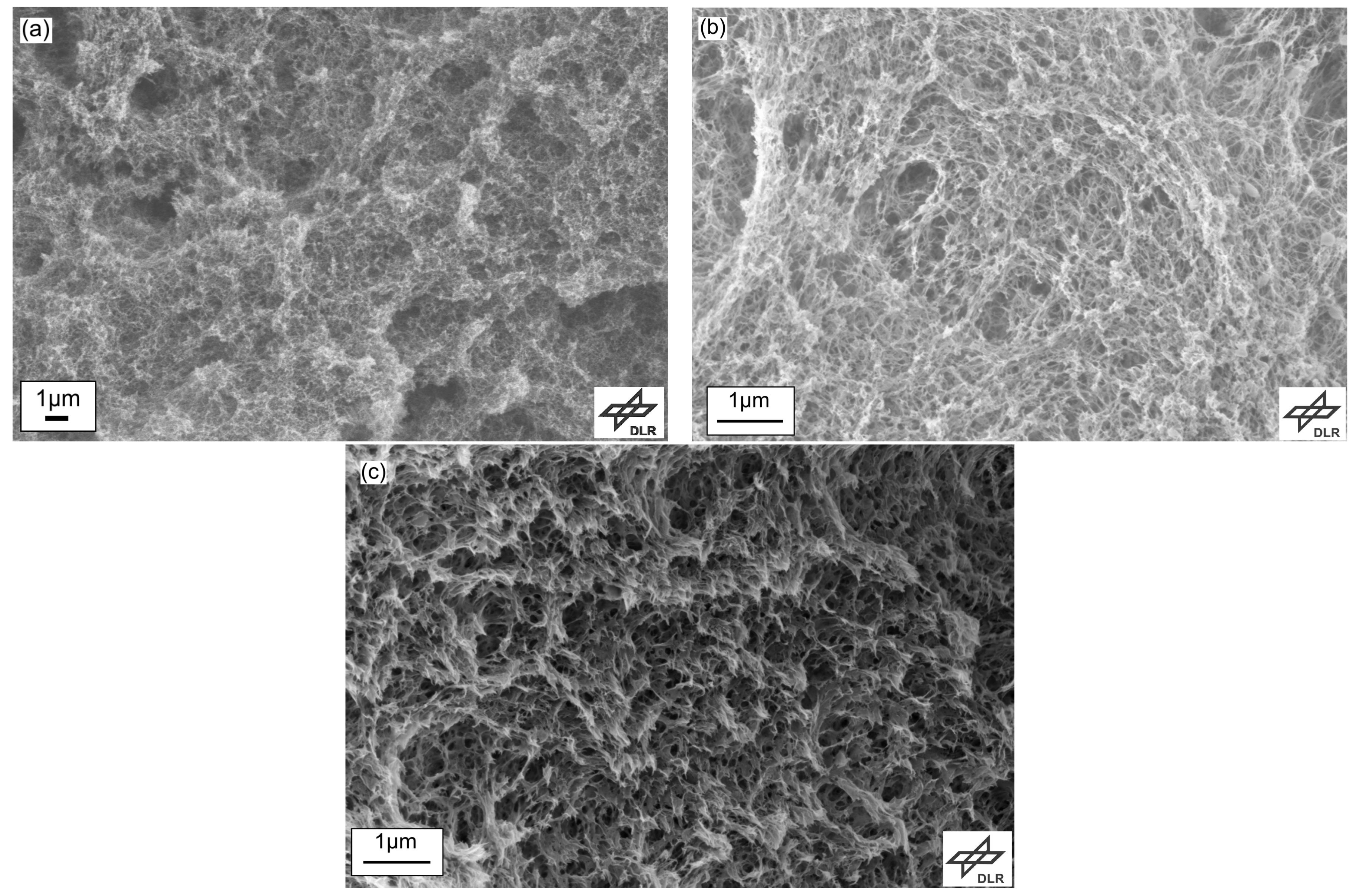


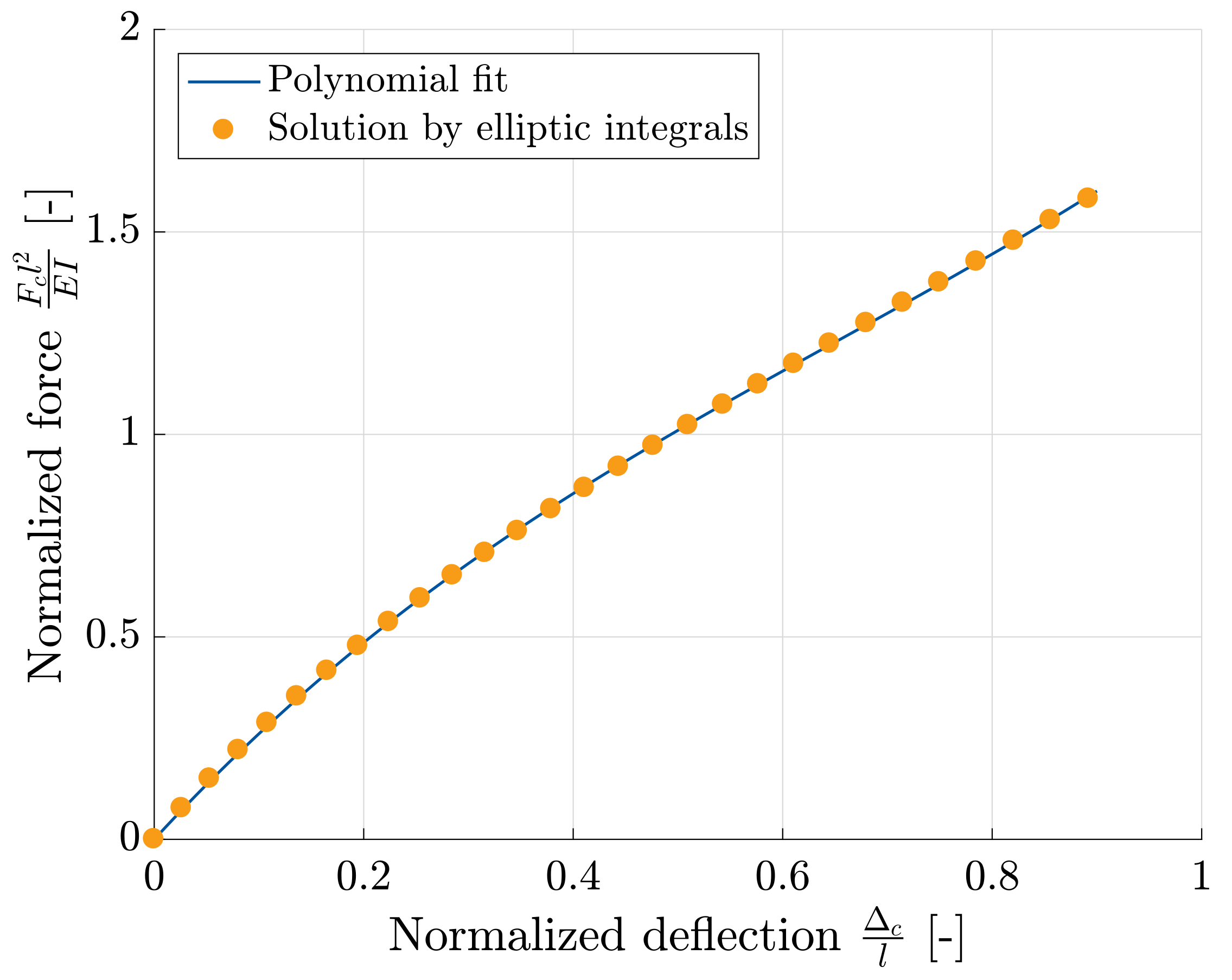

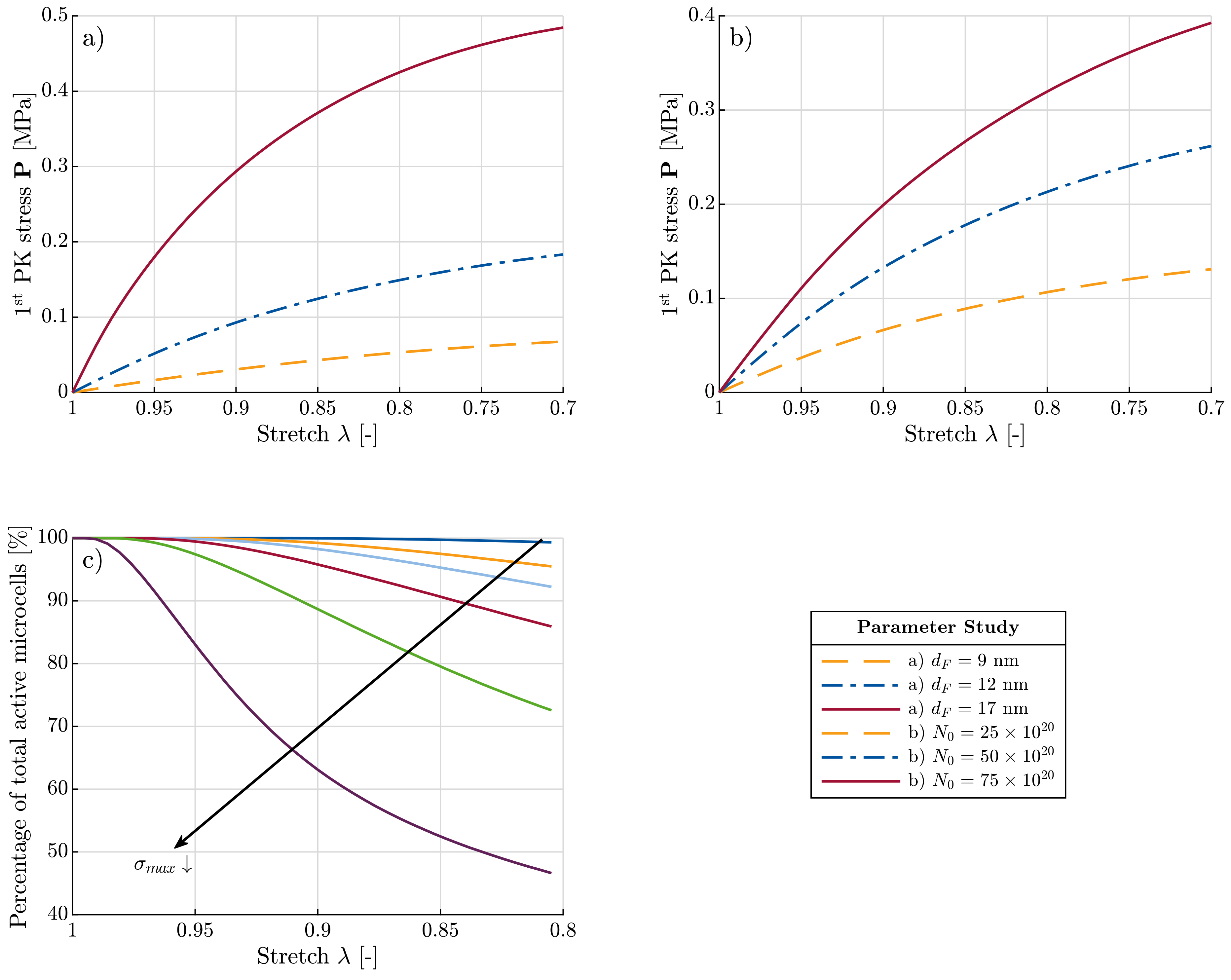
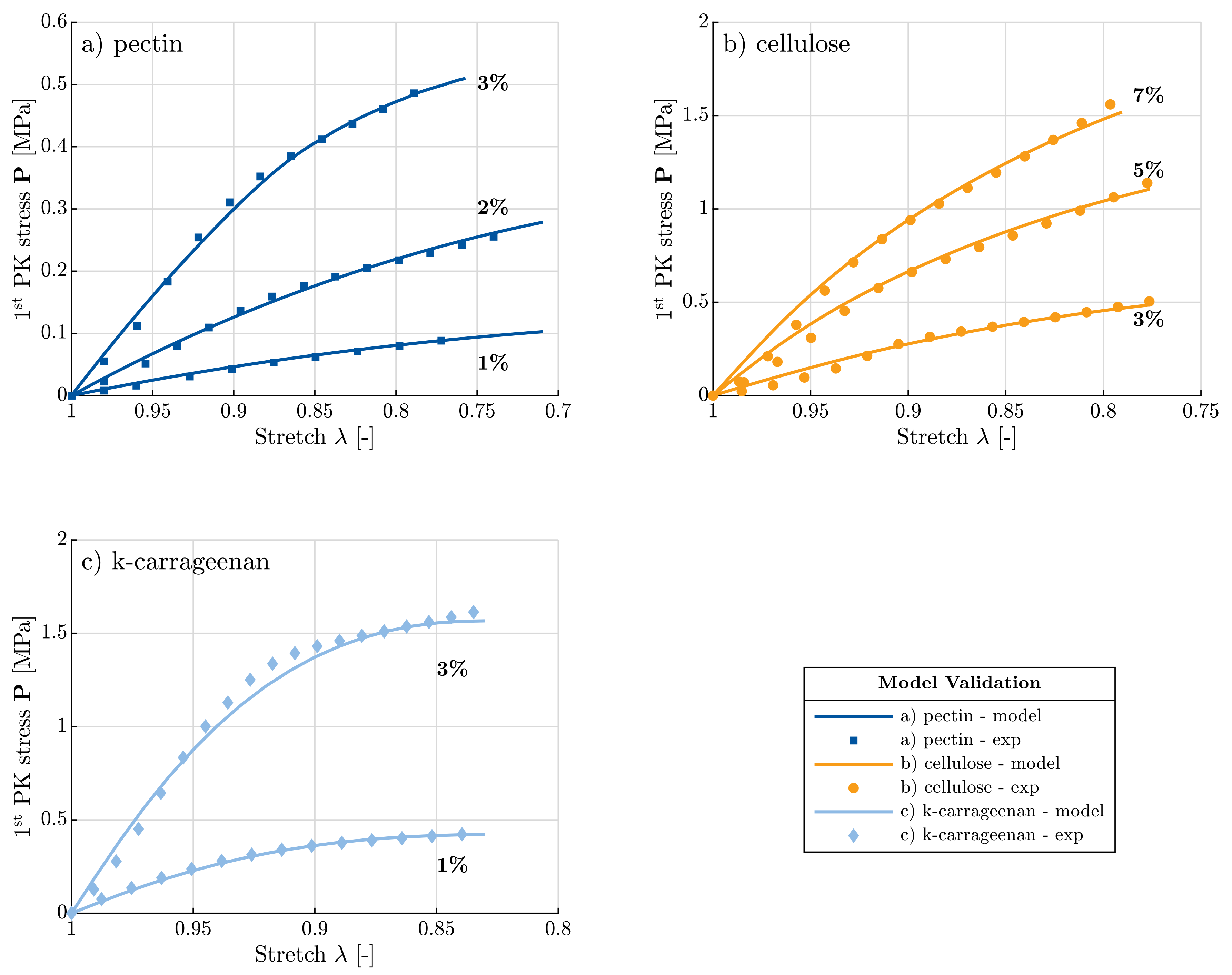
| Conc. | |||||||
|---|---|---|---|---|---|---|---|
| [wt. %] | [m·g] | [g·cm] | [g·cm] | [cm·g] | [%] | [nm] | |
| 1 | 718 ± 30 | 0.04 ± 0.02 | 1.60 ± 0.04 | 9.7 ± 0.1 | 97 ± 3 | 3.4 | |
| Pectin | 2 | 710 ± 30 | 0.07 ± 0.02 | 1.60 ± 0.04 | 5.9 ± 0.1 | 96 ± 3 | 3.5 |
| 3 | 627 ± 30 | 0.09 ± 0.02 | 1.40 ± 0.04 | 4.4 ± 0.1 | 94 ± 3 | 4.0 | |
| 3 | 491 ± 25 | 0.16 ± 0.01 | 1.49 ± 0.01 | 2.9 ± 0.1 | 90 ± 2 | 5.5 | |
| Cellulose | 5 | 421 ± 23 | 0.22 ± 0.02 | 1.49 ± 0.01 | 2.4 ± 0.1 | 86 ± 2 | 6.4 |
| 7 | 354 ± 28 | 0.28 ± 0.02 | 1.49 ± 0.01 | 2.2 ± 0.1 | 82 ± 2 | 7.6 | |
| 1 | 218 ± 3 | 0.08 ± 0.01 | 1.72 ± 0.01 | 1.2 ± 0.1 | 96 ± 1 | 10.6 | |
| K-carrageenan | 3 | 230 ± 9 | 0.15 ± 0.01 | 1.72 ± 0.01 | 1.3 ± 0.1 | 91 ± 1 | 10.1 |
| Parameter | Description |
|---|---|
| , | Minimum and maximum cell wall fibril lengths |
| Average cell wall fibril diameter | |
| E | Young modulus of the cell wall fibril |
| Initial number of microcells in the network | |
| Critical bending stress in the cell wall fibrils |
| Conc. | Young’s Modulus—Exp. | Young’s Modulus—Model | |
|---|---|---|---|
| [%] | [MPa] | [MPa] | |
| 1 | 0.51 ± 0.05 | 0.51 ± 0.03 | |
| Pectin | 2 | 1.35 ± 0.05 | 1.35 ± 0.06 |
| 3 | 3.2 ± 0.2 | 3.2 ± 0.2 | |
| 3 | 2.7 ± 0.2 | 2.9 ± 0.2 | |
| Cellulose | 5 | 7.5 ± 0.6 | 7.6 ± 0.6 |
| 7 | 11.4 ± 0.9 | 11.2 ± 0.5 | |
| K-carrageenan | 1 | 4.9 ± 0.6 | 4.6 ± 0.6 |
| 3 | 17.6 ± 0.6 | 18 ± 1 |
© 2018 by the authors. Licensee MDPI, Basel, Switzerland. This article is an open access article distributed under the terms and conditions of the Creative Commons Attribution (CC BY) license (http://creativecommons.org/licenses/by/4.0/).
Share and Cite
Rege, A.; Preibisch, I.; Schestakow, M.; Ganesan, K.; Gurikov, P.; Milow, B.; Smirnova, I.; Itskov, M. Correlating Synthesis Parameters to Morphological Entities: Predictive Modeling of Biopolymer Aerogels. Materials 2018, 11, 1670. https://doi.org/10.3390/ma11091670
Rege A, Preibisch I, Schestakow M, Ganesan K, Gurikov P, Milow B, Smirnova I, Itskov M. Correlating Synthesis Parameters to Morphological Entities: Predictive Modeling of Biopolymer Aerogels. Materials. 2018; 11(9):1670. https://doi.org/10.3390/ma11091670
Chicago/Turabian StyleRege, Ameya, Imke Preibisch, Maria Schestakow, Kathirvel Ganesan, Pavel Gurikov, Barbara Milow, Irina Smirnova, and Mikhail Itskov. 2018. "Correlating Synthesis Parameters to Morphological Entities: Predictive Modeling of Biopolymer Aerogels" Materials 11, no. 9: 1670. https://doi.org/10.3390/ma11091670







